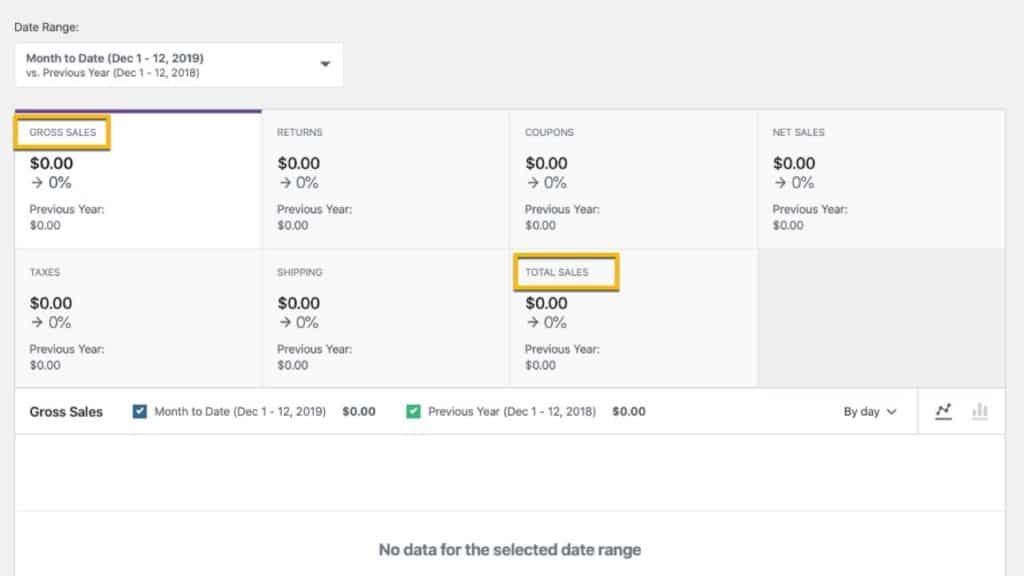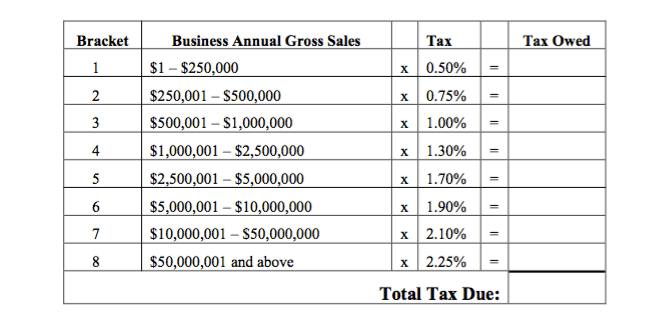Gross vs Net

What Gross Sales Can Tell You?
Gross sales are not typically listed on an income statement or often listed as total revenue. Gross sales is a metric for the total sales of a company, unadjusted for the costs related to generating those sales. The gross sales formula is calculated by totaling all sale invoices or related revenue transactions. However, gross sales do not include the cost of goods sold (COGS), operating expenses, tax expenses, or other charges—all of these are deducted to calculate net sales.

A higher ratio is usually preferred, as this would indicate that the company is selling inventory for a higher profit. Gross profit margin provides a general indication of a company’s profitability, but it is not a precise measurement.
For a company, gross income equates to gross margin, which is sales minus the cost of goods sold. Thus, gross income is the amount that a business earns from the sale of goods or services, before selling, administrative, tax, and other expenses have been deducted. For a company, net income is the residual amount of earnings after all expenses have been deducted from sales. In short, gross income is an intermediate earnings figure before all expenses are included, and net income is the final amount of profit or loss after all expenses are included. Revenue is the total amount of income generated by the sale of goods or services related to the company’s primary operations.
For retail businesses that charge sales tax, the price paid by the consumer includes the unit price of the product together with applicable sales tax – both state and local. However, sales tax is not revenue to your company and does not form part of your gross sales. Instead, it is money that you collect on behalf of the city and state for remittance at some future date. As such, you should record all sales taxes collected as a liability rather than as sales revenue.
Companies earn revenues by delivering goods and rendering services to customers. Call the total amount of all revenues generated by a company in a given fiscal period the gross sales revenue.
If more money went out than came in, the company has a net loss. Record both gross and net profit on your small business income statement.
Limitations of Using Gross Sales
Profit, typically called net profitor the bottom line, is the amount of income that remains after accounting for all expenses, debts, additional income streams and operating costs. The gross margin represents the amount of total sales revenue that the company retains after incurring the direct costs associated with producing the goods and services sold by the company. The gross profit margin is a metric used to assess a firm’s financial health and is equal to revenue less cost of goods sold as a percent of total revenue. This means that for every dollar Apple generated in sales, the company generated 38 cents in gross profit before other business expenses were paid.
Gross profit is your business’s revenue minus the cost of goods sold. Your cost of goods sold (COGS) is how much money you spend directly making your products. But, your business’s other expenses are not included in your COGS. Gross profit is your company’s profit before subtracting expenses.
- Gross profit margin is a measure of profitability that shows the percentage of revenue that exceeds the cost of goods sold (COGS).
AccountingTools
Gross sales are the total of products that your business has sold during a particular period. It’s a headline number that does not reflect all the expenses you have incurred to make the sale such as staff costs and shipping, or the fact that some customers returned their goods and received a refund or discount. Net sales, by contrast, is a number that reflects all discounts, returns, refunds and other reductions in the price paid by customers. When people speak of the bottom line in business, they’re talking about net income. Net income is simply profit, and the whole income statement flows toward this number.
Gross Profit Percentage is a measure of profitability that calculates how much of every dollar of revenue is left over after paying off the cost of goods sold (COGS). In other words, it measures the efficiency of a company in utilizing its input costs of production, such as raw materials and labour, in order to produce and sell its products profitably.
How to Evaluate a Company’s Balance Sheet
The gross profit is the absolute dollar amount of revenue that a company generates beyond its direct production costs. Thus, an alternate rendering of the gross margin equation becomes gross profit divided by total revenues. As shown in the statement above, Apple’s gross profit figurewas $88 billion (or $229 billion minus $141 billion).
It can be seen as the percentage of sales that exceeds the direct costs associated with manufacturing the product. These direct costs or COGS primarily consist of raw materials and direct labor. Calculation of gross profit percentage formula is done by dividing the gross profit by the total sales and expressed in percentage terms.
Profit margin is a percentage measurement of profit that expresses the amount a company earns per dollar of sales. If a company makes more money per sale, it has a higher profit margin. Gross profit margin and net profit margin, on the other hand, are two separate profitability ratios used to assess a company’s financial stability and overall health. Net profit, on the other hand, is the gross profit, minus overheads and interest payments and plus one-off items for a certain period of time.
How do you calculate gross sales?
Gross sales are the grand total of all sale transactions reported in a period, without any deductions included within the figure. Net sales are defined as gross sales minus the following three deductions: Sales allowances. A reduction in the price paid by a customer, due to minor product defects.
Gross revenue, however, is not always the most accurate representation of a company’s sales. Oftentimes customers will return damaged goods, receive a discount from the typical selling price, or demand a refund for some other reason.
Gross profit margin is a measure of profitability that shows the percentage of revenue that exceeds the cost of goods sold (COGS). The gross profit margin reflects how successful a company’s executive management team is in generating revenue, considering the costs involved in producing their products and services. In short, the higher the number, the more efficient management is in generating profit for every dollar of cost involved. Gross sales can be an important tool, specifically for stores that sell retail items, but it is not the final word in a company’s revenue.
Is tax included in gross sales?
The gross sales formula is calculated by totaling all sale invoices or related revenue transactions. However, gross sales do not include the cost of goods sold (COGS), operating expenses, tax expenses, or other charges—all of these are deducted to calculate net sales.
The gross profit margin is calculated by taking total revenue minus the COGS and dividing the difference by total revenue. The gross margin result is typically multiplied by 100 to show the figure as a percentage. The COGS is the amount it costs a company to produce the goods or services that it sells.
Your income statement shows your revenue, followed by your cost of goods sold, and your gross profit. The next section shows your operating, interest, and tax expenses. The concepts of gross and net income have different meanings, depending on whether a business or a wage earner is being discussed.